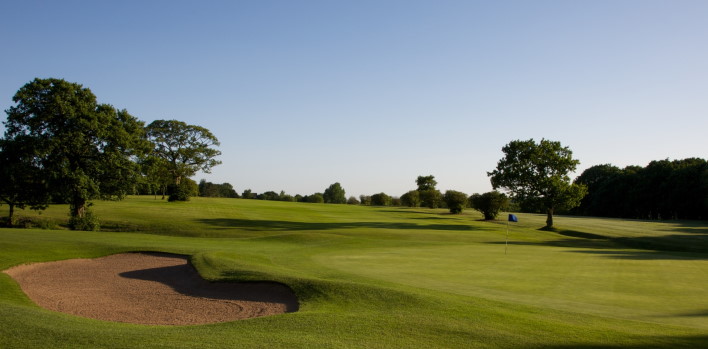Ashridge

In the summer of 2014 the fast running nature of the course made it play more like a heathland classic rather than the parkland layout it ultimately is.
Variety and ambience abounds at Ashridge and tranquillity is very much the order of the day.
Each of the 18 holes has its own personality but significantly there is only one time in the round when the following hole has the same par as its predecessor. The par of the holes is as follows; 453453434434545354. This helps produce a varied sequence of shots with five par threes, five par fives and just eight par fours in the total par tally of 72.
The mature course, officially opened in 1932, is laid out in three distinct loops emanating from the centrally located modern clubhouse at the low point of the estate in an almost goldfish bowl setting. More golf can be viewed from the attractive balcony at Ashridge than at any other course I can think off with the first, 10th and 13th tees easily visible as well as the superb ninth and 18th green complexes. However, even with the putting green in close proximity, it doesn’t feel cluttered or cramped.
The trio of returning loops consist of nine, three and six holes, if starting at the first, and throughout each one you have some lovely changes in gradient where the holes blend seamlessly together. Each one takes you through areas of outstanding natural beauty close to the edge of the Chiltern Hills.
The pink fescue rough that framed many of the holes on my visit is thin and wispy but just as likely to turn a clubface over as the fiercest heather. It adds to the beauty and colour of the course and you rarely succumb to a lost ball should an errant shot find it. Well placed bunkers during the 18 holes must be flirted with in order to set up favourable approaches as the strategic nature of the course also comes to the fore.
The par three’s are all good holes with the sixth and 11th vying for the best in my opinion. The gathering green and grassy hollow short of the former are superb whilst the topography of the landscape and angle of the green behind imposing bunkers at the latter is what makes it so special.
There isn’t a sniff of a weak hole at the two-shotters either with plenty of width from the tee at most of them. The first plays through a shallow valley and is a lovely opener whilst the fourth requires longer hitting and at the seventh placement down the left is preferable. However, the best par four on the front side comes at the ninth when after a semi-blind drive the green, etched onto the hillside, reveals itself in true glory; it not only looks great but requires a precise approach, often from an awkward downhill lie and stance.
The pick of the bunch of the par fours on the back nine is clearly the 12th. A fine drives takes you to a winding fairway but it is the green complex at this 409 yard hole that sets it apart. Playing to a front pin position requires the most accurate and brave of approaches with bunker-less trouble lurking for those who foolishly try and play safe. The ideal shot into the green is from the right but this calls for a long and accurate drive to 'Cottons Patch'. It really is a hole where you just have to stand up and hit the perfect shot… twice.
The green at the 446 yard 14th is also worthy of mention with a huge angled tier taking you from fairway level to the main area of the putting surface towards the back. The fact you will likely be going in with a long iron makes judging the second shot particularly challenging and when shooting to a flag on the left-hand-side it is often compared to playing the Road Hole at St. Andrews.
So what of the par fives? Well these don’t disappoint either in fact they are likely to produce the most exciting golf of all. Each one can be reached in two by longer hitters, especially when the ground is firm, but they are certainly no pushovers. In fact their features around the greens can often turn what you may think is a birdie opportunity into a frustrating bogey.
The best of them is the second that continues down the same valley as the opening hole. Cunningly placed bunkers that act as a magnet down the left must be skirted to set up a shorter approach but the main hazard is a grassy hollow just short and to the left of the sloping green; as penal as any bunker but much more subtle.
The fifth, which could perhaps do with some tree clearance on the left, is also a belter with just a lone bunker to avoid at driving distance on the right but again the main danger manifests itself as you approach the raised green and must hurdle the deceptive bunkers 100 yards short. The 13th is the weakest of the quintet whilst the 15th has a shrewd bunker eating into the green on the right and the 17th boasts one of the trickiest greens you will find anywhere.
Overall the golf at Ashridge never appears too taxing but putting together a score is not as easy as it may first appear. The sight of deer romping across the fairways is also a sight to behold and simply adds to the graceful and peaceful nature of this Regional Open Championship Qualifying venue.
The excellent golf and variety at traditional Ashridge make this Hertfordshire’s finest club but also worthy of a trip from much further afield. The proximity of London and in particular the Surrey sandbelt results in Ashridge going somewhat under the radar. It really shouldn’t.



